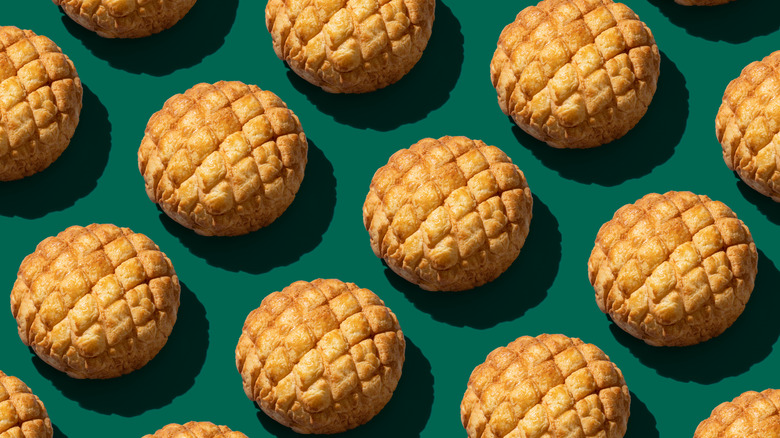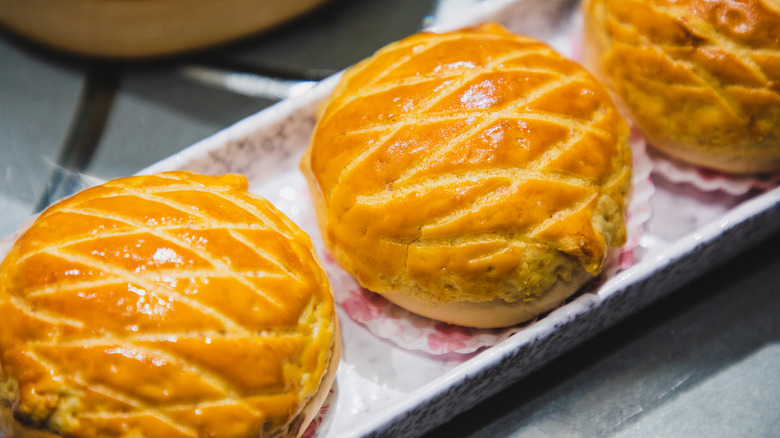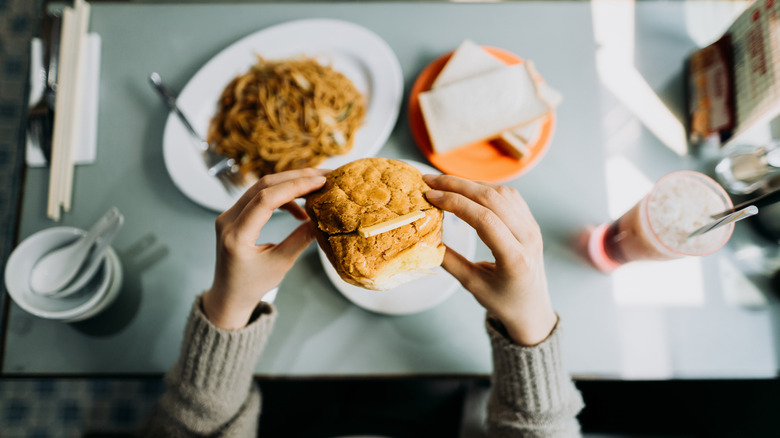Do Hong Kong's Classic Pineapple Breakfast Buns Actually Have Any Pineapple?
Hong Kong's culinary scene is full of dishes that captivate the palate. Once you've had dim sum, char siu, or fishball curry, it's almost impossible not to want more. Good thing there's always something new to try. Nestled among these well-loved staples is a breakfast pastry that has become tightly woven into the locals' daily fabric. Boh loh bao, also known as pineapple buns, is a shining example of the cuisine's simple yet unique charm. With popularity tracing back to the 1940s, this sweet bread is also a beautiful testament to Hong Kong's traditional craftsmanship in the kitchen.
The first thing you need to know about boh loh bao is it doesn't actually have pineapple. The name is based on its distinctive checkered exterior and golden-brown hue that loosely resembles the fruit. The ingredients, instead, are familiar baking essentials such as flour, milk, butter, sugar, yeast, and eggs. They are then mixed into a dough, kneaded, and left to rise.
Meanwhile, the baker prepares the sugar-based topping that will go over the top of the buns. What makes it special is the use of ammonia powder, which is added in small amounts to achieve a distinctive crisp. Baked to perfection, what comes out of the oven is pillowy soft milk bread juxtaposed by a hard, crumbly crust that makes the pastry so uniquely enticing.
Whether it's sweet or savory, boh loh bao does it all
Don't let boh loh bao's simple ingredients or appearance fool you. This pastry is far from lackluster. Before even tasting it, you will be mesmerized by its heavenly scent. Buttery and milky, it promises all the goodness to come. When biting into the tender bread, these flavor notes melt beautifully onto your taste buds. Layered in between are pops of sweetness from the top layer, subtly contrasting the base with its crumbliness.
The flavor wonder doesn't end there, either, because hidden inside boh loh bao's golden exterior is a world of possibilities for fillings. Although butter is the typical choice, almost anything else will work. It could be a minor change like custard or something different like red bean paste, black sesame paste, chocolate, or shredded coconut to diversify the flavor profile.
Want to branch out into savory territory? Not a problem! Combine this sweet treat with another beloved Hong Kong specialty — char siu pork (which you can easily make in the air fryer). Since the meat carries its own sweet undertone, it fits seamlessly into the buns' vibrant flavor profile. Pork floss — dried, finely shredded meat — is another great pick if you want umami intensity in every bite. Other options, such as spam swept with a sweet glaze or satay-smothered meat, are also possible. Get as experimental as you want and discover your own ways to enjoy the buns' versatility.
Boh loh bao tastes even better when it's got companies
Boh loh bao is pretty enjoyable on its own, but you might like it even more with extra company. Staying true to the Hong Kong experience, a glass of Hong Kong milk tea (a strained mix of Ceylon black tea and condensed milk) is the ideal companion. Many even dip the buns into the milk tea for extra sweetness. This also works with other beverages, whether we're talking coffee, plain milk, or any other variations of milk tea.
Of course, if you're an avid fan of dim sum, you may have seen boh loh bao in one of the passing-by carts before. After all, it is one of the best dim sum dishes out there. This sweet bread doesn't sound like it would fare well among all the savory dishes at first, but as you can already tell from its diverse array of fillings, it's versatile beyond imaginable. Just have a few buns on the table, fill it however you like, and your breakfasts and brunches are guaranteed to be packed with rich, vivid flavors.


